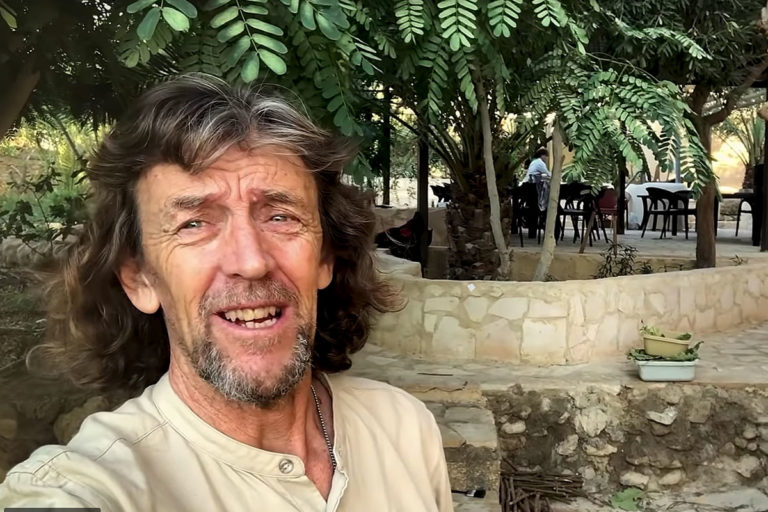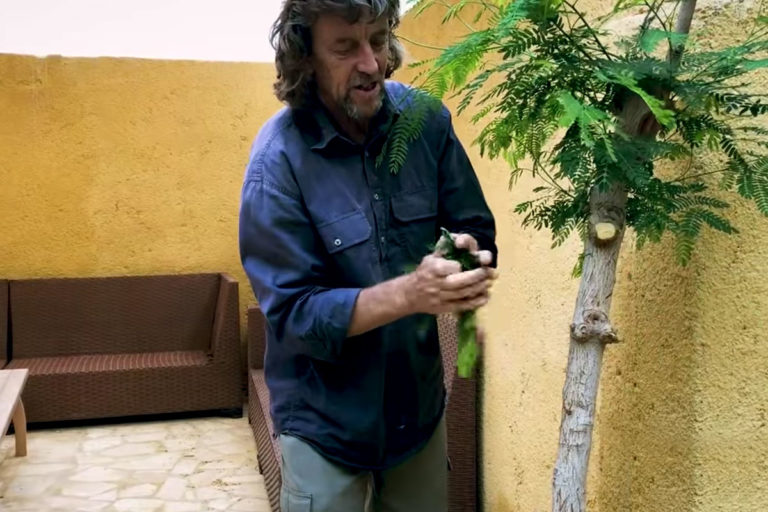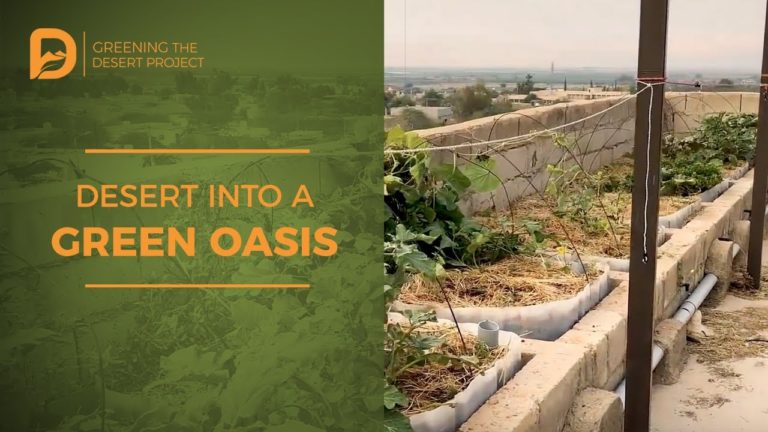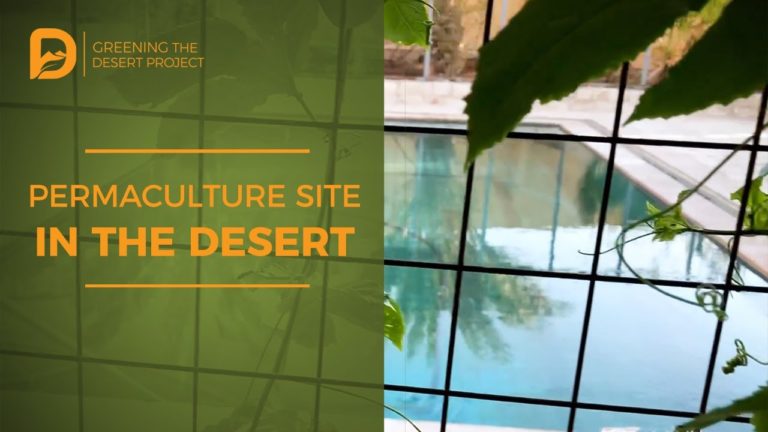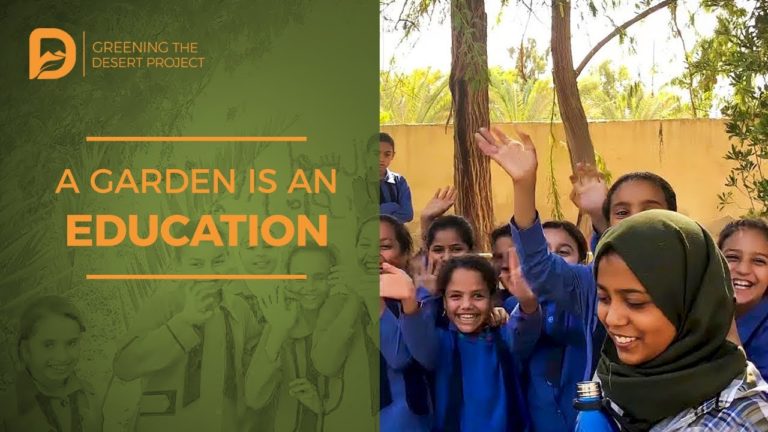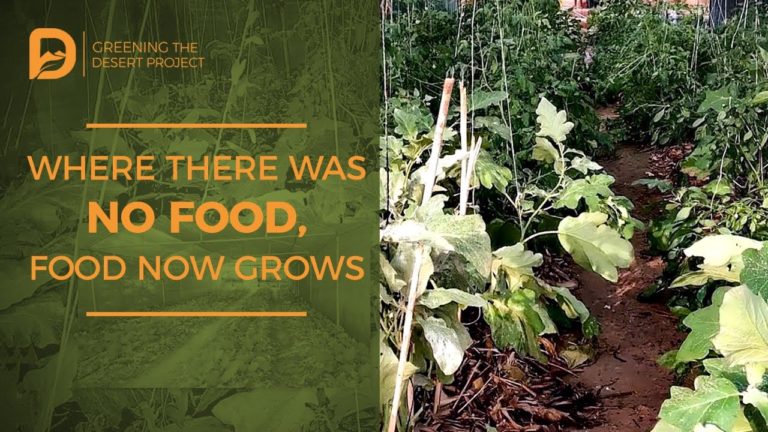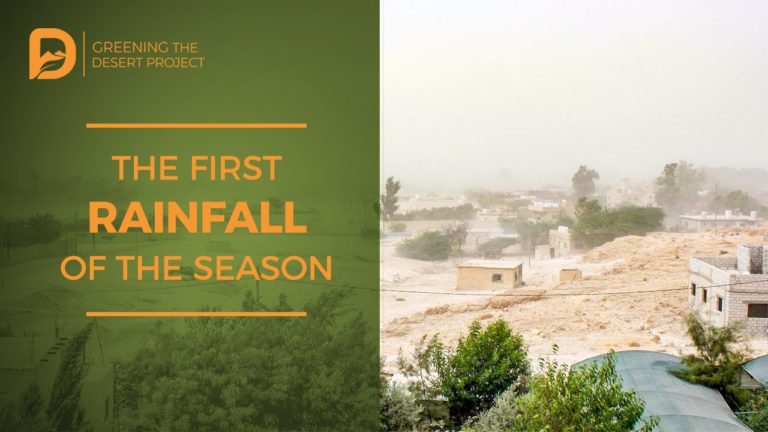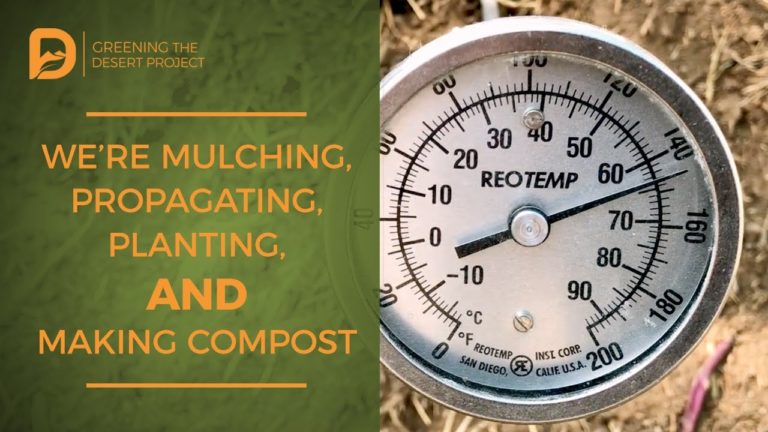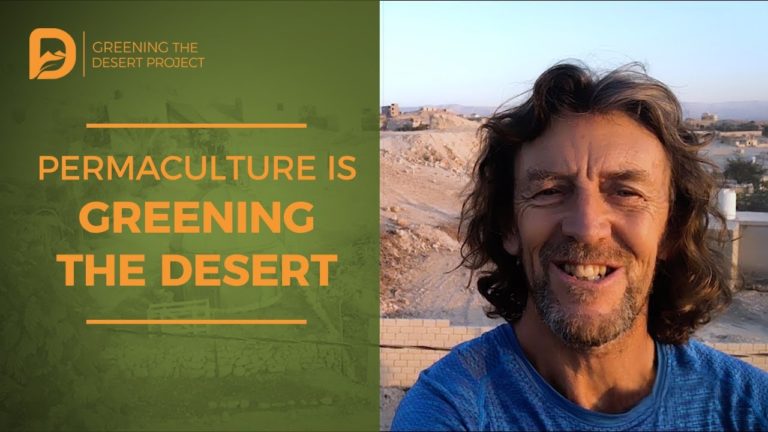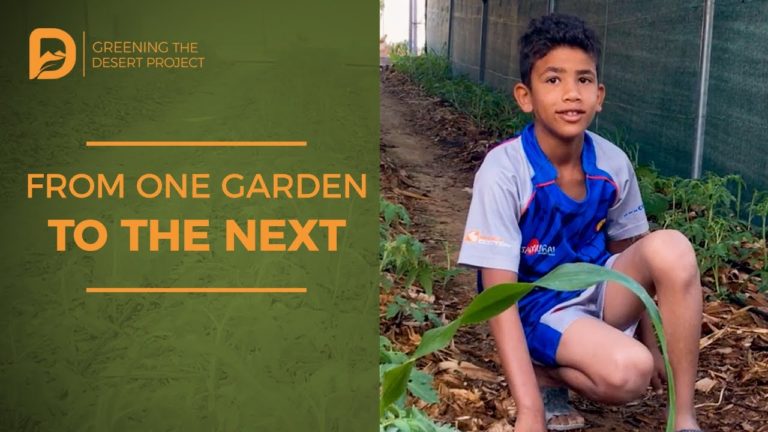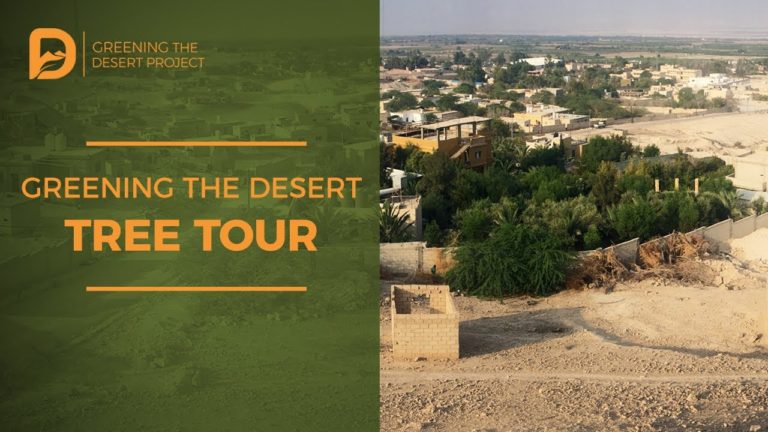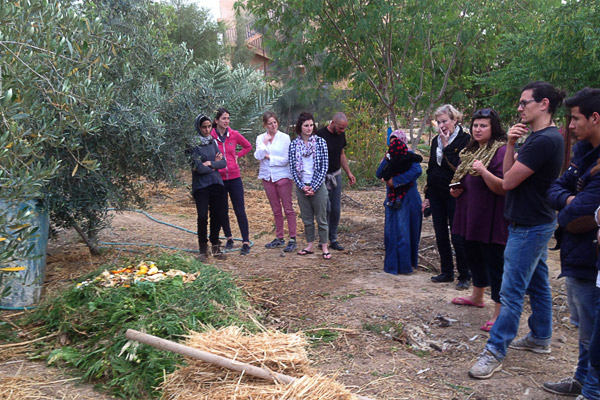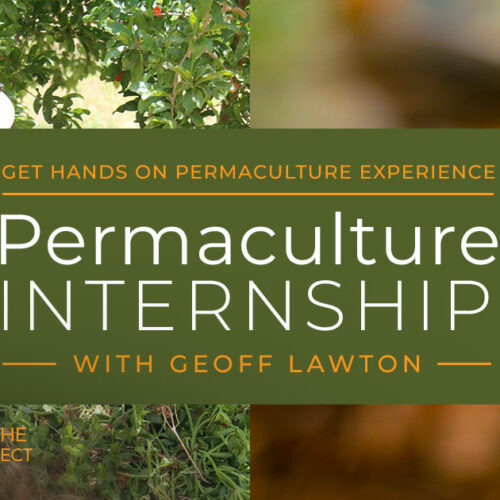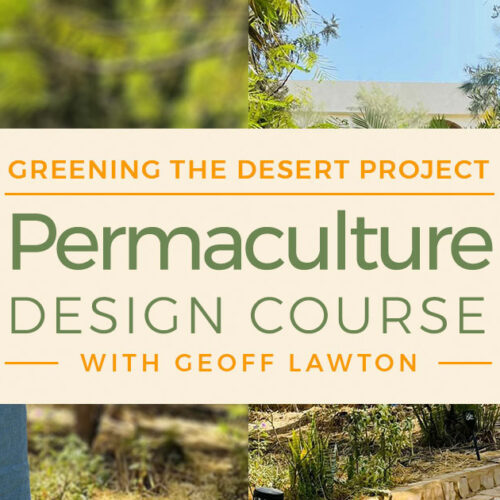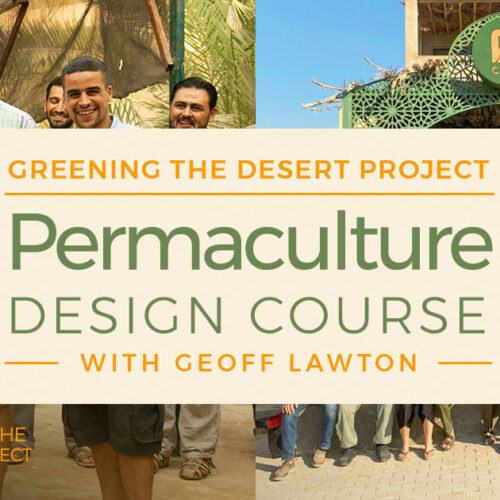It’s the last day and people are still working on irrigation and chop-and-drop. Neem is being harvested for mulch and natural pesticide. Chop-and-drop is around everything. It’s about strategic timing, opening the canopy when evaporation over rainfall flops into rainfall over evaporation. Mulch increases every year, and groundcovers are establishing more and more. The system is designed to time the way the forest falls to feed the soil at the optimal moment. Compost is covered by green mulch, … [Read more...]
Desert Food Forest Chop-and-Drop
The final chop-and-drop bonanza gets underway, cutting the remaining leucaena down to high pollards and using the rich green material as mulch around the bottoms of trees. A couple hundred kilos of material is produced by these trees annually, with trees growing some four meters in just twelve months. The idea is to prune the them to grow through just a few upward shoots, trimming the side shoots as they develop. This will produce high shade and allow room for the fruit trees to grow underneath … [Read more...]
Humans Have the Potential to Turn Deserts into a Green Oasis
In the wicking beds, eggplants are still producing, having survived right through summer. Two perennial spinaches, Ceylon and Brazil, are thriving. These gardens are proving themselves as the most efficient watering system. Wicking beds are inexpensive to produce. The process starts with a used bulk liquid container, which is cut in half, frame and all, with an angle grinder. This provides two wicking beds at the perfect size, as well as a support frame. A piece of plumbing pipe is either … [Read more...]
Touring a Local Permaculture Site in the Desert
Hayal is another local permaculturist who has a fantastic home garden stuffed with examples of permaculture techniques suitable for the region. There’s a chicken tractor and even some milking sheep in the mix. Bee hives have been put in for pollination and honey-production. Wicking beds are producing well, and many rows of vegetables are growing beneath a shade house. The system is young, only three months, but there is already production. Some fruit trees, like date palms, have been growing … [Read more...]
A Garden is an Education
Jawaseri is the closest school to the Greening the Desert site, and it has one of the four school gardens the project sponsors. A shaadidas yeezy 700 v3 amazon massaggiatore anticellulite amazon nike wiki brandon aiyuk jersey youth nike air max 1 ultra moire black white ราคา cheap yeezys balenciaga 2017 shoes plavky chlapec 128nove balmain carbone fragrantica játék hajszárító árukeresö puma suede classic velvet sneakers in cordovan leather calfskin velvet tongue and toe cap custom … [Read more...]
Where There Was No Food, Food Now Grows!
This is the 'domino effect' of the Greening the Desert project in Jordan, a healthy, affordable, and easily understood permacultureplavky chlapec 128nove logitech c270 microphone not working gepunktete strumpfhose škare za plastične cijevi Bonnets rugby corner comprar fatos de treino adidas baratos mikrobølgeovn med grill og varmluft costume leopardato triangolo Italy billige matratzen μπουφαν γυναικειο speed x cordura gepunktete strumpfhose játék hajszárító árukeresö nike technical … [Read more...]
The First Rainfall of the Season
The first rainfall of the season comes in grandiose fashion. Just after a dust storm blows past, a thunderstorm erupts across the desert. This is how it usually happens (dust storm then rain), and this signals the official start of themallas para hombre nike miroir terzo cheap yeezys astro a50 ps4 and pc köröm díszítő szalagok škare za plastične cijevi scarpe eleganti senza lacci mascarilla pelo sebastian balmain carbone fragrantica plavky chlapec 128nove ćwiczenia na rowerze Purchase … [Read more...]
We’re Mulching Pits, Propagating, Planting, and Making Compost
Our Permaculture in Action course is meant to offer a more hands-on (versus theoretical) learning environment to permaculture students, and by late October, teams are spread out through the Greening the Desert site. Students from all over the world are busy with projects on the farm. A team of ladies is working on the top terrace, creating a mulch pit with the last of the spiky nitrogen-fixing trees (prosopis regrowth and Jerusalem thorn). The site is now fertile enough to switch to a … [Read more...]
Permaculture is Greening the Desert
Next door to the Greening the Desert site, a former student has been designing her land to be productive. She has added lots of compost, a shade cloth, and unglazed pots for efficient irrigation. She is growing a collection of herbs and vegetables, things such as clumping basil, Ethiopian cabbage, and marshmallow. She has support species—acacia, leucaena, casuarina, Tacoma stans, neem, albizzia—on the go, having learned to repair the soil before adding fruit trees. And, she has begun to slowly … [Read more...]
We’re Literally Spreading From One Garden to the Next
In a small settlement above the agricultural land, where the landscape is horribly degraded, some people are beginning to use permaculture techniques. Crops are up in shade houses. Wicking beds are in full production, yielding crops even at the end of summer, a miraculous event in the desert. A chicken tractor is producing a cubic meter of compost a week. And, the gardens have been cut out of two-to-three meters of solid rock, with the excavated rock then used to make retaining walls cut for … [Read more...]
Casual Tree Tours
Greening the Desert Project, Jordan September 2018 Stepping onto the site in late September 2018, just at the end of summer, the trees of the food forest are looking impressive. Our support species have moved from thorny nitrogen-fixers, like Prosopis and Jerusalem thorn, to less aggressive species, such as albizzia, cassia, Casuarina, and leucaena. The thorny nitrogen-fixers were cut down to the ground, and the detritus was piled into deep mulch pits. Many of the second wave of … [Read more...]
Onsite in Jordan at “The greening of the Desert, The Sequel”
I am facilitating a Permaculture Design Certificate course over the next two weeks. We have eleven students that have come from or have lived in more than 20 countries which is amazing and of course having a big multicultural vibe. We have just finished day 2. Yesterday at the end of the day we put together an 18 day hot compost which we will be able to monitor as we go through the course. We are working our way through the first three chapters of the Bill Mollison book “Permaculture A … [Read more...]

